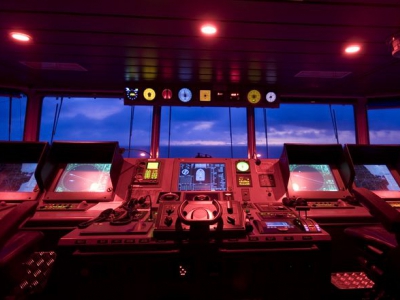AMSA has issued Marine Notice to provide guidance on ECDIS for ships calling at Australian ports. The phased carriage requirement of Electronic Chart Display and Information System (ECDIS) is underway and is scheduled to be completed by 2018
Guidance on ECDIS for ships calling at Australian ports
The phased carriage requirement of Electronic Chart Display and Information System (ECDIS) is underway and is scheduled to be completed by 2018.Comprehensive guidance is available in the International Maritime Organization (IMO) Circular MSC.1/Circ.1503 ECDIS Guidance for Good Practice. All ships masters, navigating officers and operators of ships fitted with ECDIS are encouraged to use this guidance to facilitate the safe and effective use of ECDIS.This Marine Notice highlights areas relevant to the safe and proper operation of ECDIS for ships visiting Australian ports. It also provides information on AMSA’s expectations for ECDIS compliance during port State control (PSC) Inspections.
Software Quality Assurance
Ship owners and operators need to ensure careful management and regular maintenance of both ECDIS hardware and software. MSC.1/Circ.1503 contains guidance on maintenance of ECDIS software and identifies the need to keep ECDIS updated to meet the current International Hydrographic Organization (IHO) standards.The IHO published new editions of the S-52, S-63, and S-64 standards in August 2015. The following IHO standards apply to all newly installed ECDIS equipment:
-
Edition 6.1 of Publication S-52 – Specification for Chart Content and Display Aspects of ECDIS
-
Edition 4.0 of S-52 Annex A – IHO Presentation Library for ECDIS
-
Edition 1.2.0 of Publication S-63 – IHO Electronic Navigational Chart (ENC) Data Protection Scheme
-
Edition 3.0 of Publication S-64 – IHO Test Data Sets for ECDIS.
The current editions of these standards remain valid until 31 August 2017, at which time the previous versions will no longer display the appropriate presentation library. To display the latest approved presentation library, existing ECDIS systems will require upgrading or in some cases replacing before 31 August 2017.
Anomalies
A list of known ECDIS anomalies is included in MSC.1/Circ.1503. Due to the complex nature of ECDIS, and because it involves a mix of hardware, software and data, it is possible (but considered not likely) that further undetected anomalies may exist. The existence of anomalies highlights the importance of maintaining ECDIS software to ensure the correct display of up-to-date electronic navigational charts.To help understand the extent of these anomalies, navigating officers are encouraged to report any such anomalies, including specific details regarding fitted equipment, to their flag State authority.
ECDIS Data Presentation and Performance Check dataset
The IHO has produced an ECDIS Data Presentation and Performance Check dataset that allows mariners to check some important aspects of the operation of their ECDIS. This dataset contains two fictitious ENC cells which can be loaded into an ECDIS to assess operating performance. The test will check whether there are any display anomalies that need to be remedied or otherwise managed. If the check highlights a problem, guidance notes in the check dataset offer suggested courses of action.
Chart Carriage Requirements
The International Convention for the Safety of Life at Sea(SOLAS) Chapter V Regulation 27 states that all nautical charts necessary for the intended voyage shall be adequate and up to date. For ships using ECDIS to meet the chart carriage requirement of SOLAS, all ENCs (and any RNCs) must be of the latest available edition and be kept up to date using both the electronic chart updates (e.g. ENC updates) and the latest available notices to mariners.
Mode of ECDIS operation
ECDIS may be operated in one of two modes:
- ECDIS mode when ENC’s are used
-
Raster Chart Display System (RCDS) mode, when suitable ENC’s are not available and Raster Navigational Chart’s (RNC) are used instead.
RCDS mode does not have the same functionality as ECDIS mode and can only be used together with an appropriate folio of up to date paper charts. MSC.1/Circ.1503 provides guidance on the limitations and dangers of operating ECDIS in RCDS mode.All Australian waters are covered by ENCs and therefore ECDIS should not need to be operated in RCDS mode. Where lack of ENC coverage requires navigation in RCDS mode, mariners should critically consider the implications of not having a look-ahead capability.
ECDIS training requirements
The International Convention on the Standards of Training, Certification and Watchkeeping for Seafarers (STCW), requires all officers who carry out navigational tasks to be appropriately trained. All officers in charge of a navigational watch must have a thorough knowledge of and ability to use nautical charts and nautical publications (see STCW Code Table A-II/1). The definition of a nautical chart in SOLAS V/2 includes a special-purpose map or book, or “a specially compiled database”. This includes ENCs and RNCs, relating to the use of ECDIS. All masters and officers in charge of a navigational watch on ECDIS-fitted ships who commenced an approved education and training program before 1 July 2013 will need to have undertaken approved ECDIS training.
Port State Control inspections
AMSA’s PSC Inspectors focus on how ships meet the SOLAS requirements for chart carriage and the safe and effective conduct of navigation tasks. PSC Inspectors will take account of ECDIS-related issues including:
-
appropriate declaration of ECDIS equipment in the Record of Equipment – Safety Equipment Certificate
-
listing of ECDIS as critical equipment in the Safety Management System (SMS)
-
documented procedures and instructions for the use of ECDIS are included in the SMS and that they are understood by all officers responsible for navigation
-
ECDIS type approval certificate, confirming compliance with relevant IMO performance standard and the International Electrotechnical Commission (IEC) test standard
-
ECDIS software is maintained to the latest applicable IHO standards
-
use of latest edition official ENCs, updated and corrected to the latest available updates and notices to mariners
-
adequate independent back-up arrangements (as detailed on the Record of Equipment), ensuring safe navigation for the remainder of the voyage in the event of an ECDIS failure
-
approved ECDIS generic and familiarisation training has been undertaken by the master and officers in charge of a navigational watch
-
conformance and alignment with input from sensors (e.g. heading, speed and rate of turn) and presentation of such information on the ECDIS display
-
evidence of periodic tests and checks of the ECDIS carried out in accordance with the SMS and manufacturer’s requirements
-
demonstration of operational competency by the ship’s navigating officers (e.g. safety checking of a voyage plan)
-
ECDIS settings are appropriate to the ship’s dimensions and area of operations (e.g. cross track error, anti-grounding cone, safety depth and contour)






























































